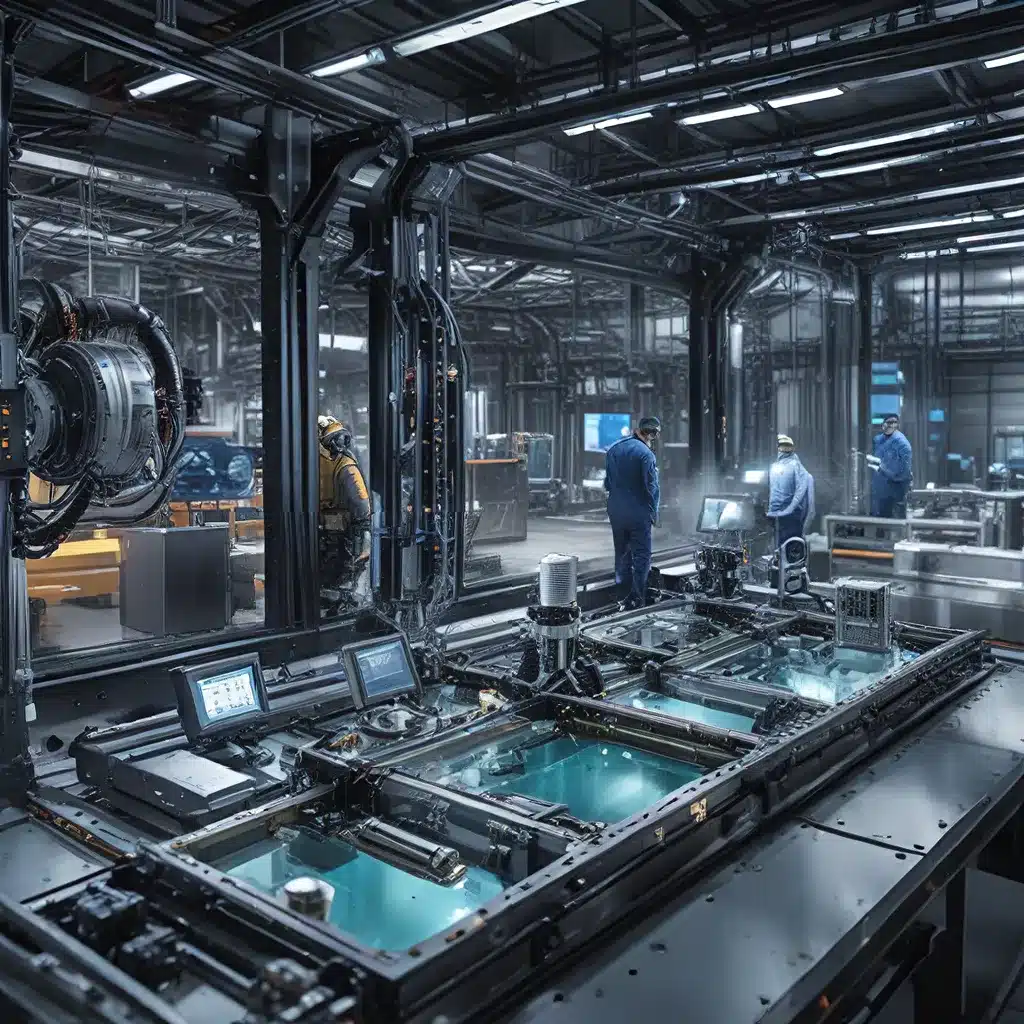
In the rapidly evolving landscape of industrial technology, the rise of sensor networks and Internet of Things (IoT) applications has ushered in a new era of smart manufacturing. At the forefront of this transformation are digital twins – virtual representations of physical assets, systems, or processes that enable unprecedented levels of insight, optimization, and predictive capabilities.
The Convergence of Sensor Networks and Digital Twins
Sensor networks have become the backbone of modern industrial operations, collecting vast amounts of real-time data from various equipment, machinery, and infrastructure. These sensor-generated data streams provide a wealth of information that can be harnessed to unlock the full potential of digital twins.
Sensor-driven digital twins seamlessly integrate the physical and virtual worlds, enabling manufacturers to simulate, analyze, and optimize their operations in a risk-free, digital environment. By combining the data from sensor networks with advanced analytics and simulation capabilities, digital twins offer a powerful decision-support tool that can significantly enhance manufacturing efficiency, asset performance, and predictive maintenance.
Transforming the Design and Construction Process
The impact of sensor-driven digital twins can be seen throughout the entire lifecycle of a manufacturing facility, starting from the design phase.
During the design phase, a comprehensive inventory of all critical assets is made, and their characteristics and functional relationships are captured in an ontology database. A digital twin is then created by translating the design blueprints into a 3D model, which can be viewed and interacted with in a virtual environment. This digital twin incorporates the planned sensor placements and data collection methods, ensuring a robust and autonomous monitoring system from the outset.
As the facility construction phase progresses, the digital twin is continuously updated to reflect the true state of the facility. It can be used to monitor construction progress, simulate installation methods, and optimize the use of temporary storage space – all before the physical facility is even complete. Photogrammetry techniques are employed to create detailed, high-fidelity representations of the as-built assets and infrastructure, further enhancing the virtual model.
Optimizing Operations and Maintenance
Once the facility is operational, the digital twin becomes the command-and-control center, providing a responsive and intuitive interface for monitoring and managing all aspects of the manufacturing process. Informed by real-time data from the sensor networks, the digital twin can simulate various operational scenarios and test potential changes in a risk-free, virtual environment before implementing them in the physical world.
The maintenance phase is where the true power of sensor-driven digital twins shines. By continuously monitoring the health and performance of individual assets, the digital twin can predict when maintenance is required – even before the physical equipment shows signs of failure. Sensors embedded in electrical transformers, transmission lines, pumps, and other critical components provide early warning signals, allowing the digital twin to guide the maintenance cycle and optimize asset performance throughout the facility.
Unlocking the Power of Predictive Analytics
The seamless integration of sensor data and analytical capabilities within a digital twin enables predictive analytics that can transform manufacturing operations. For example, in utility environments, digital twins can foresee power grid failures by predicting factors like the likelihood of fires starting, gas leaks, or pipe bursts. This allows utility workers to visualize the asset in the context of the entire system, check its status, and perform simulations to identify and mitigate potential issues before they occur.
Similarly, in the manufacturing sector, sensor-driven digital twins can anticipate equipment failures, optimize production schedules, and even forecast demand patterns. By leveraging real-time data and advanced modeling techniques, these virtual representations can provide actionable insights that empower manufacturers to make better-informed decisions, reduce downtime, and improve overall operational efficiency.
Addressing the Challenges of Sensor Network Security and Energy Management
As the adoption of sensor networks and IoT technologies in manufacturing continues to grow, the need for robust security measures becomes increasingly critical. Digital twins can play a crucial role in addressing these challenges by providing a centralized platform for monitoring and managing the security of connected devices and data streams.
By simulating potential cyber threats and evaluating the effectiveness of security protocols within the digital twin environment, manufacturers can proactively identify vulnerabilities and implement appropriate countermeasures without risking their physical operations. Additionally, the digital twin’s ability to model energy consumption patterns can aid in the development of energy-efficient designs and optimize the energy management strategies for manufacturing facilities.
Unlocking the Future of Smart Manufacturing
The convergence of sensor networks and digital twins is poised to revolutionize the manufacturing industry, ushering in a new era of data-driven, predictive, and adaptive operations. By harnessing the power of these technologies, manufacturers can unlock unprecedented levels of efficiency, resilience, and innovation, positioning themselves for success in the rapidly evolving landscape of Industry 4.0.
As the sensor networks and IoT continue to permeate every aspect of the manufacturing ecosystem, the role of digital twins will become increasingly central, serving as the bridge between the physical and virtual realms. By embracing this transformative technology, forward-thinking manufacturers can stay ahead of the curve, optimize their operations, and unlock the full potential of their sensor-driven assets.